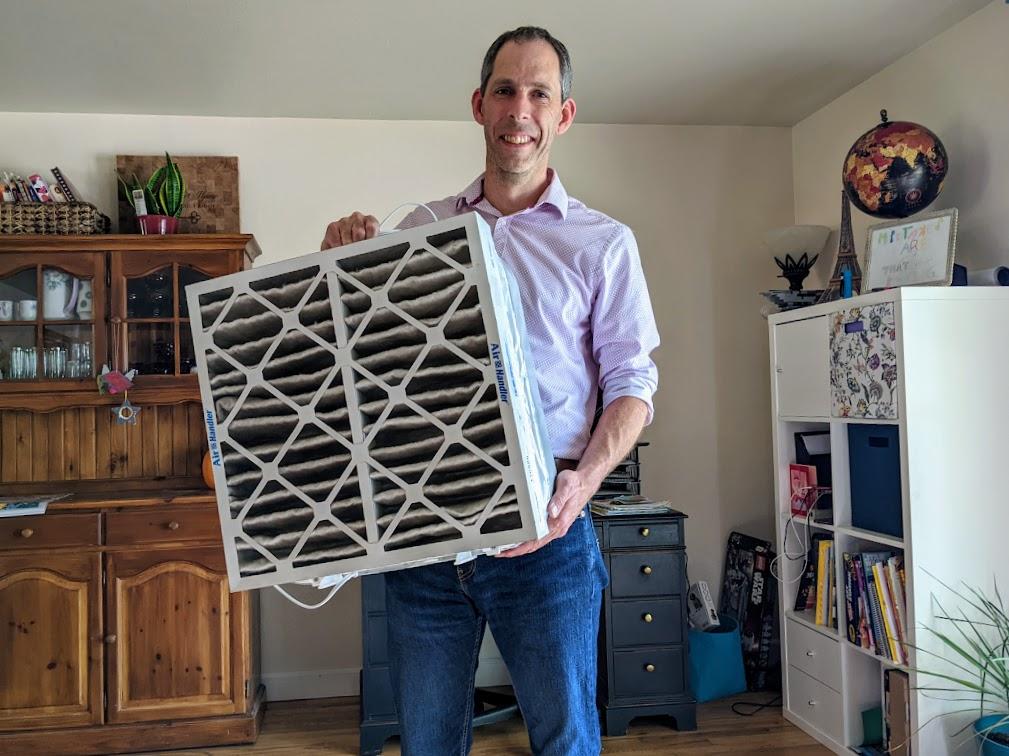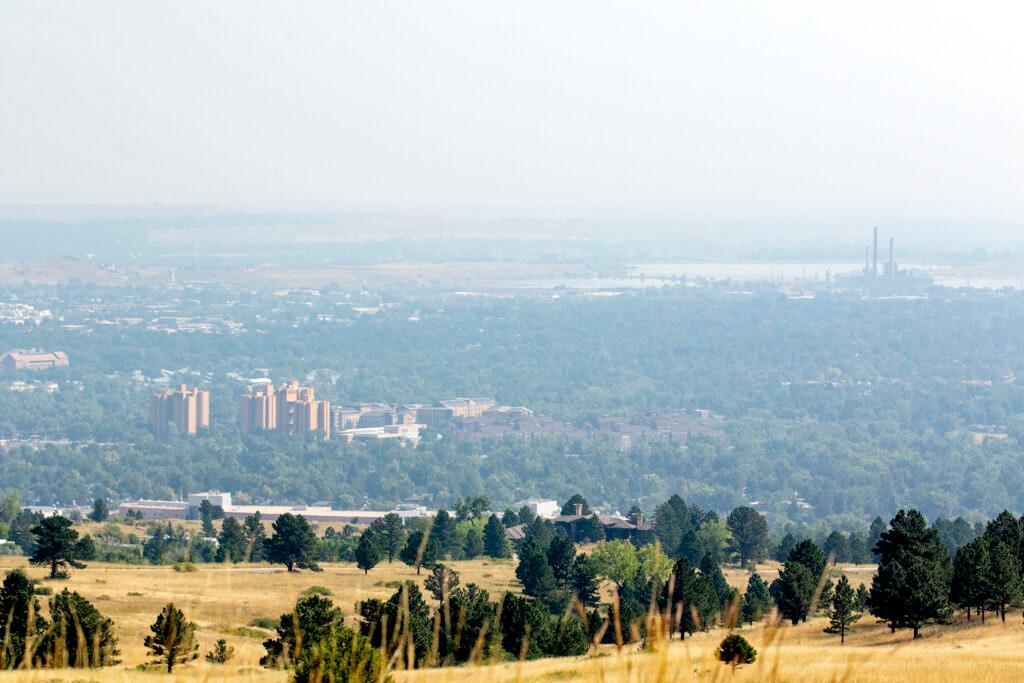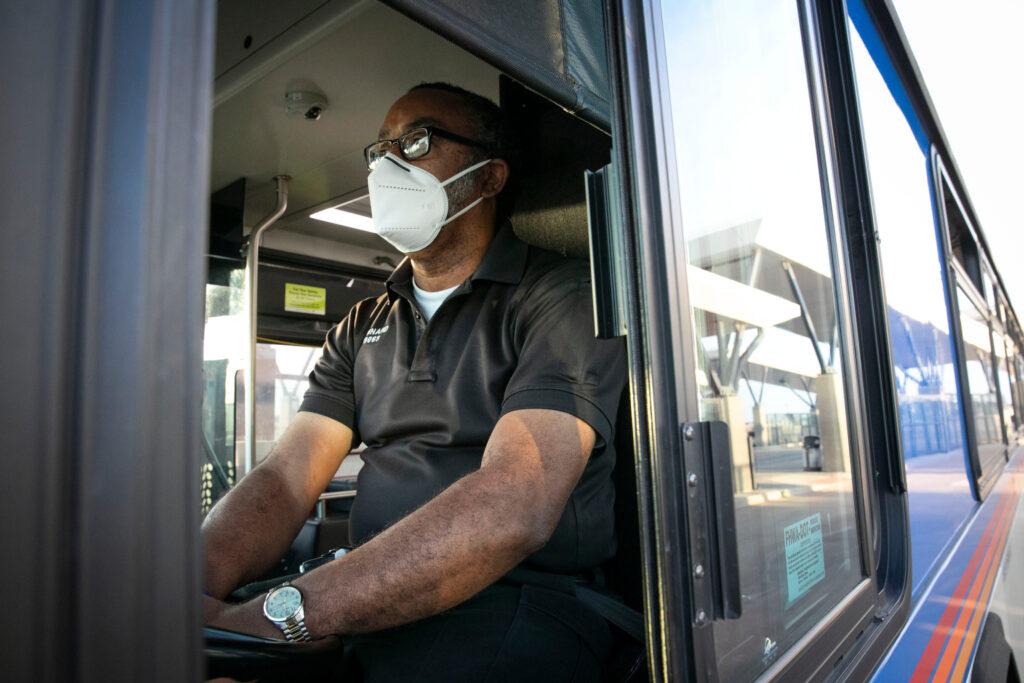
Over the last few summers, Colorado residents have grown accustomed to hearing the same set of recommendations when wildfire smoke blankets their community: Avoid outdoor exercise. Head inside. Shut the windows.
But experts say those immediate actions only go so far.
Alex Huffman, an associate professor studying air contaminants at the University of Denver, notes smoke can invade a home through cracks and ventilation systems, so preventative measures are necessary to guard indoor air quality and protect people’s health.
"You can't completely stop it, but there are things you can do to help the amount you breathe in," Huffman said.
It's now clear that in the West, and even in many further afield parts of the country, wildfire smoke will be a chronic side-effect of climate change and decades of poor forest management. As wildfires grow larger and more frequent, a CPR News analysis found Colorado residents now experience between two to four additional smoky weeks every year compared to a decade ago.
The trend worries public health experts because smoke contains tiny particles capable of burrowing themselves deep into the human body. Breathing that material can trigger shortness of breath, asthma attacks and heart attacks. Long-term risks include weakened immune systems and premature births.
There are proven ways to limit exposure even as particulates sneak indoors. Here's what Colorado scientists have done in their own homes — and what they'd recommend for yours.
Monitor indoor and outdoor air quality
At the start of the COVID-19 pandemic, Huffman brought home a professional air monitor to assist with his work on germ-carrying droplets. When wildfire season kicked up, it gave him a surprising view into the effect of outdoor smoke plumes.
Even deep in his basement, the instrument showed unsafe levels of particles in the air.
Huffman now recommends households explore far cheaper methods to monitor outdoor and indoor air quality. To help manage his asthma, he keeps a careful eye on the EPA's fire and smoke map, which tracks nationwide smoke plumes and air quality readings.
To monitor indoor air quality, he purchased an egg-shaped monitor from PurpleAir, which now sits on a table inside the front door of his home in Centennial. It glows green, yellow or red depending on the severity of suspended particulates.
Basic senses are an even cheaper alternative. Colorado air forecasters recommend assuming air quality is unsafe if you can’t clearly see something less than five miles away. Smells can also serve as evidence of wildfire smoke, but shouldn’t always be trusted. Christine Wiedinmyer, an air quality scientist at the Cooperative Institute for Research in Environmental Sciences at the University of Colorado Boulder, said smoke from far-off fires doesn't carry an odor but can be dangerous nonetheless.

Buy or make a high-quality indoor air filter
Huffman has a portable air purifier in his living room to help remove wildfire smoke. He demonstrated its efficiency by turning on a popcorn popper with a filthy heating element.
Smoke filled the room as his indoor air monitor turned an alarming red. The purifier then pulled the smoke closer with a gentle hum, bringing particulates back to safe levels in about 30 seconds.
When shopping for an air purifier, Huffman said it should have HEPA filtration to remove particles. He recommends against anything with "plasma" or "ionization," which doesn't do much about wildfire smoke and can add other pollutants to the air.
If a $200 machine is out of the question, another option can be fashioned from a box fan taped to one or several furnace filters of a MERV13 grade or higher. The device, called a Corsi-Rosenthal Box, was born after a mechanical engineer tossed out the idea on Twitter.
Huffman installed a number of these contraptions around his house and donated others to his kids' classrooms. Instructions are available online.
Seal openings and run your air conditioner (if you have one)
Wiedinmyer recommends sealing doors and windows to prevent any wildfire smoke from making it into the home. If you have an air conditioner, replace the filter then set it to recirculate air to further cut indoor pollutants.
Not all homes have the luxury of air conditioning. Huffman has a swamp cooler, which he prefers for its energy efficiency. Because those systems rely on circulating cooled external air, they aren’t nearly as well equipped to handle poor outdoor air quality.
"It's just pushing wildfire smoke into our house pretty efficiently, which is really unfortunate," Huffman said.
He doesn't see an easy way around the problem at the moment. On smoky days, he said households that use swamp coolers or open windows will need to decide if welcoming the bad air is worth it.
Wear a high-quality mask
When you have to head outside on a smoky day, Huffman recommends wearing a high-quality N95 mask to protect against particulates. Don’t bother with cloth masks, though; their mesh isn’t fine enough to stop the bits of wildfire smoke, he said.

Support community solutions
In making those recommendations, Huffman doesn't want to suggest individuals should carry the full responsibility to protect themselves and their families from wildfire smoke. Businesses, nonprofits and local government have a critical role to play as well, he said.
When charitable organizations respond to wildfires, Huffman hopes they arrive ready to protect indoor spaces with a range of air filters. Building codes could be another tool to add improved ventilation, and, in many cases, those same steps could help protect against airborne pathogens.
"The same things we've been recommending to reduce the inhalation of aerosols during the COVID epidemic are the same things we could do to reduce the amount of wildfire smoke you breathe in," Huffman said.









